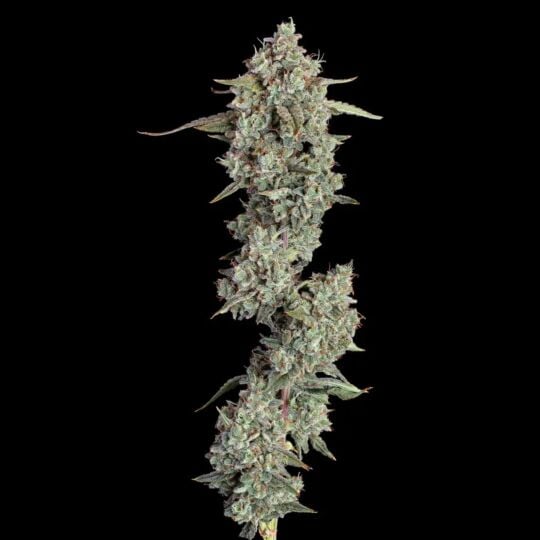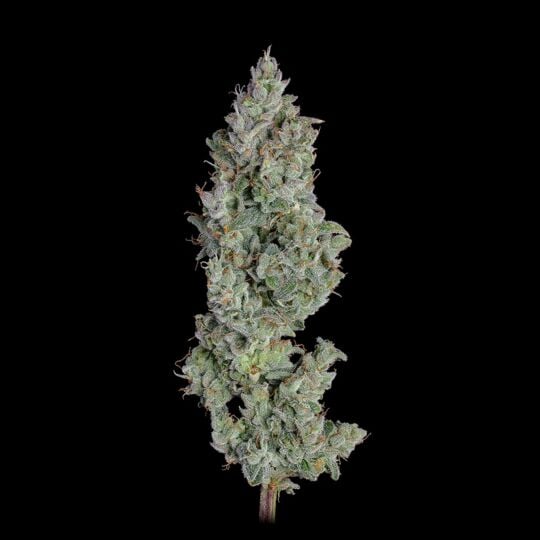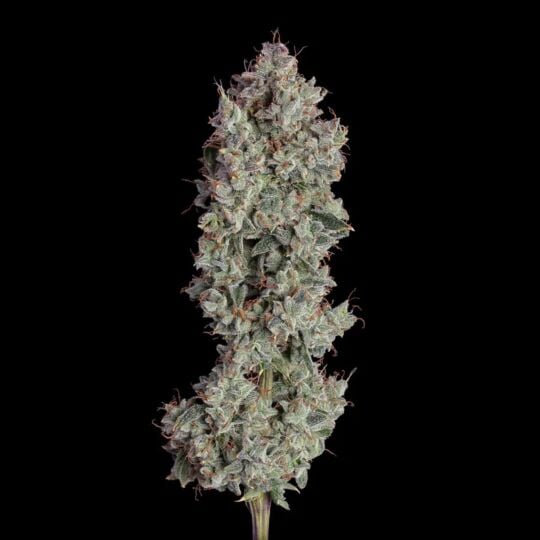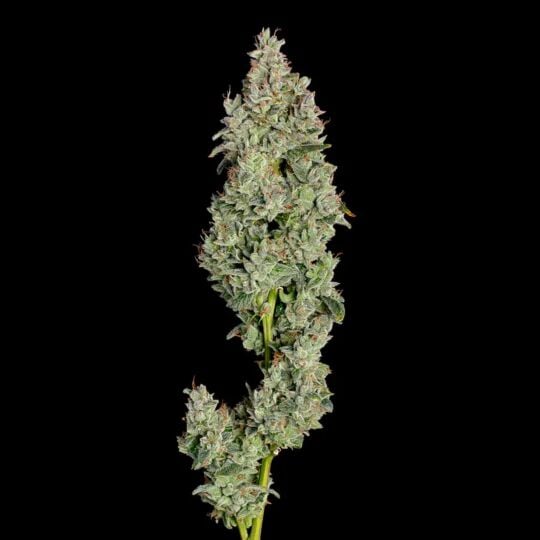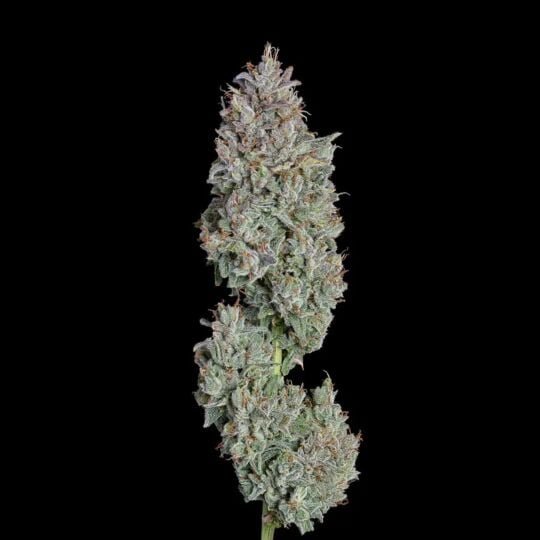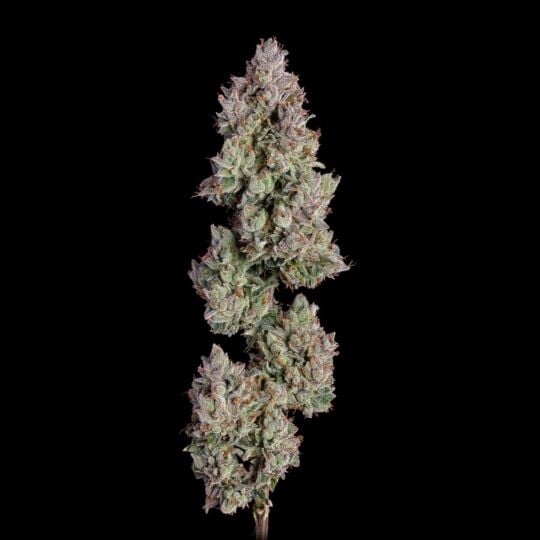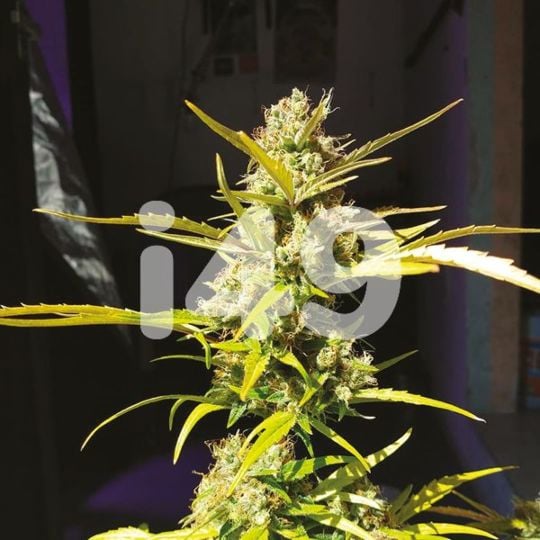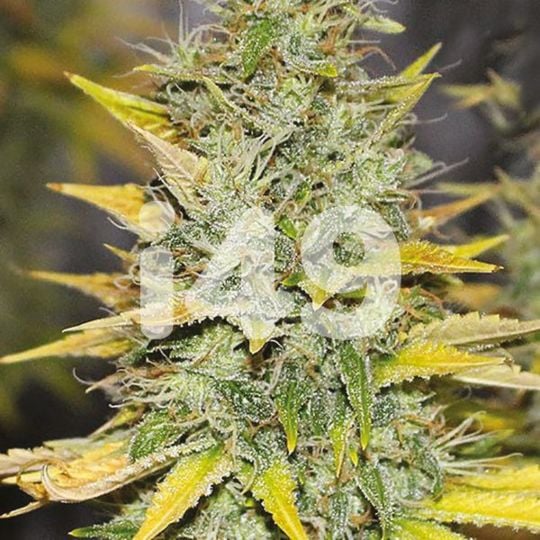Autoflower Seeds
Autoflower seeds are an excellent option for beginners. These unique cannabis varieties are designed to start flowering automatically after a set period, without relying on changes in light cycles.
-
 Everglades OG Autoflower - Happy Valley Genetics$40.00Variety: HybridTHC Content: Very High (over 20%)In stock
Everglades OG Autoflower - Happy Valley Genetics$40.00Variety: HybridTHC Content: Very High (over 20%)In stock -
 Pineapple Diesel Autoflower - Happy Valley Genetics$40.00Variety: HybridTHC Content: Very High (over 20%)In stock
Pineapple Diesel Autoflower - Happy Valley Genetics$40.00Variety: HybridTHC Content: Very High (over 20%)In stock -
 Shortcut Autoflower - Happy Valley Genetics$40.00Variety: HybridTHC Content: Very High (over 20%)In stock
Shortcut Autoflower - Happy Valley Genetics$40.00Variety: HybridTHC Content: Very High (over 20%)In stock -
 Pineapple Daddy Autoflower - Happy Valley Genetics$40.00Variety: HybridTHC Content: Very High (over 20%)In stock
Pineapple Daddy Autoflower - Happy Valley Genetics$40.00Variety: HybridTHC Content: Very High (over 20%)In stock -
 Easy Button Autoflower - Happy Valley Genetics$40.00Variety: HybridTHC Content: Very High (over 20%)In stock
Easy Button Autoflower - Happy Valley Genetics$40.00Variety: HybridTHC Content: Very High (over 20%)In stock -
 Oh My Thai Autoflower - Happy Valley Genetics$60.00Variety: Mostly SativaTHC Content: Very High (over 20%)Out of stock
Oh My Thai Autoflower - Happy Valley Genetics$60.00Variety: Mostly SativaTHC Content: Very High (over 20%)Out of stock -
 Aurora Autoflower Cannabis Seeds$55.00Variety: Mostly IndicaTHC Content: Very High (over 20%)In stock
Aurora Autoflower Cannabis Seeds$55.00Variety: Mostly IndicaTHC Content: Very High (over 20%)In stock -
 Purple Sunset Autoflower Cannabis Seeds$55.00Variety: HybridTHC Content: Very High (over 20%)In stock
Purple Sunset Autoflower Cannabis Seeds$55.00Variety: HybridTHC Content: Very High (over 20%)In stock -
 Critical Jack Autoflower Cannabis Seeds$55.00Variety: Mostly IndicaTHC Content: High (15-20%)In stock
Critical Jack Autoflower Cannabis Seeds$55.00Variety: Mostly IndicaTHC Content: High (15-20%)In stock -
 BlackBerry Autoflower Cannabis Seeds$55.00Variety: HybridTHC Content: Very High (over 20%)In stock
BlackBerry Autoflower Cannabis Seeds$55.00Variety: HybridTHC Content: Very High (over 20%)In stock -
 Gold Leaf Autoflower Cannabis Seeds$55.00Variety: Mostly SativaTHC Content: High (15-20%)In stock
Gold Leaf Autoflower Cannabis Seeds$55.00Variety: Mostly SativaTHC Content: High (15-20%)In stock -
 LSD Autoflower Cannabis Seeds$55.00Variety: Mostly IndicaTHC Content: Very High (over 20%)In stock
LSD Autoflower Cannabis Seeds$55.00Variety: Mostly IndicaTHC Content: Very High (over 20%)In stock
What Are Autoflowering Cannabis Seeds?
Traditionally, cannabis has been categorized into indica and sativa strains, with most plants being photoperiod varieties, which means that to transition from the vegetative into flowering stage, they need changes in the light cycle.
However, autoflowering cannabis strains are bred with Cannabis ruderalis genetics, which makes them flower automatically after a set period of growth, without relying on light cycles.
That turns out to make auto seeds faster and easier to manage, and also allows them to produce multiple harvests per year. All of that happens without losing the high potency and quality associated with modern indica and sativa hybrids.
Why Grow Autoflowers?
Autoflowering seeds are a great choice for first-time growers because they are less demanding. Light management is simpler since they begin flowering without relying on light schedules or seasonal changes.
They are also a good option for less experienced growers, as they tend to stay smaller and are therefore better suited to limited spaces, indoor tents, balconies, and similar settings.
Choosing the Best Autoflower Seeds
If you want to grow autoflower cannabis seeds with confidence, Seed Supreme is the top choice. With over a hundred carefully selected autoflower varieties, detailed filters (THC level, flavor, height, yield, etc.), and a germination guarantee, you're empowered to choose autoflower cannabis seeds that matches your space, taste, and goals exactly.
Add in frequent promotions, solid user reviews, and guidance for both beginners and experienced growers, and Seed Supreme offers unmatched value and certainty in your seed purchase.
Planting Autoflower Seeds
Here are the first things to consider when you decide to plant autoflowering strains:
The Best Pots for Your Autoflower Cannabis Plants
For autoflower seeds, it's best to plant them straight into their final pot to avoid stressing the plants, since they don't have much time to recover. Another thing to keep in mind is that autoflowers often start flowering once their taproot reaches the bottom of the container.
So, to give them the best chance to grow big and healthy, skip the intermediate pots and go straight to the final one.. A medium size of about 11 L (≈3 gallons) works well indoors, while smaller pots (5 L or less) suit tight spaces and larger ones (20 - 40 L) are better outdoors.
Fabric pots, fabric raised beds and airpots are a good option for auto seeds because of its aeration and drainage, though plastic pots are affordable if they have good drainage holes. The goal is to give roots enough space to thrive while matching your grow space and setup.
Best Soil to Use for Autoflower Seeds
Autoflower cannabis grows best in light, airy soil with good drainage and a slightly acidic pH (6.0 - 6.5). Mixes with perlite, coco coir, or vermiculite prevent compaction and waterlogging, while avoiding "hot" soil mixes too rich for seedlings.
Super soil or living soil enriched with organic amendments can sustain autoflowering plants through most of their cycle.The key is to provide moderate nutrition, because autoflowers need fewer nutrients as they are smaller and grow faster than photoperiod plants. High levels of nutrients can easily lead to nutrient burn and stunted growth.
How to Germinate Autoflowering Strains
To germinate autoflowering cannabis seeds, most seed banks recommend either the paper towel, water soak, or direct-to-soil method.
- The paper towel method involves placing seeds between moist paper towels( not soaked), keeping them warm and dark until the taproot appears (usually 1 - 3 days), then gently transferring them to soil.
- The water soak method has you place seeds in clean room-temperature water for 12 - 24 hours to soften the shell and speed up sprouting; once a small root appears, move them into soil or a grow plug.
- The direct-to-soil method is simply planting the seed about 0.5 - 1 cm deep into the soil, pointy side down. The soil must be light and airy, and kept moist until the seedling emerges.
For any method you choose, autoflower cannabis seeds will only germinate if kept in stable warmth (around 21 - 26 °C) and consistent but not excessive moisture. It is also crucial to handle the fragile taproot with great care.
Indoor and Outdoor Growing of Autoflowering Plants
To decide whether to grow autoflower cannabis indoors or outdoors, you must take your personal circumstances and goals into account.
Indoor growers benefit from year-round harvests and stability but must deal with equipment and energy costs. On the other hand, growing outdoors is cheaper and can produce bigger yields, though it depends on favorable weather and seasonal conditions. See a more detailed explanation of each scenario below:
Pros and Cons of Indoor Growing
Growing autoflower weed plants indoors is the best option for those aiming for full control over light cycles, temperature, humidity, and airflow. Plants stay compact, which is ideal for tents or small spaces. Yields per plant are usually smaller, though it is possible to achieve consistent results and year-round harvests.
However, higher costs for lighting, ventilation, and electricity are expected for indoor setups. Mistakes with nutrients or watering can also have a quicker impact in this context, since autoflowering weed seeds have a fixed life cycle.
Pros and Cons of Outdoor Growing
Autoflowering plants grown outdoors benefit from direct sunlight, fresh air, and unlimited root space. Because of that, they often grow larger and produce higher yields without requiring big investments or lots of equipment.
While outdoor growers can thrive in long summer days, they are also more vulnerable to pests, diseases, and extreme weather compared to controlled indoor environments.
The Perfect Watering for Autoflower Cannabis Seeds
Balance is key for autoflower cannabis seeds when it comes to watering. It is important to keep seedlings in a lightly moist medium, but never let them sit in water. As the plant grows, deeper waterings become necessary, though the soil should be allowed to dry out somewhat. Keep in mind the following practices:
- Light watering is the starting point for seedlings. Soil should be moist but not waterlogged.
- Let the soil dry somewhat between waterings.
- Avoid overwatering, it can cause root problems, nutrient lockouts and compromise a healthy growth.
- Use adequately draining medium, soil must hold moisture but also allow excess water to drain.
- Maintaining the correct pH of water/nutrient solution is crucial for nutrient uptake.
- Adjust as plants grow. As the root system develops, the plant will take up more water.
- To avoid salt buildup and ensure even watering of the whole medium, you must water until runoff occasionally.
- A fixed schedule should not be trusted blindly: what works in one grow room does not necessarily work in another.
Temperature and Humidity for Autoflower Seeds
Something important to remember when growing autoflower cannabis seeds is that temperature and humidity vary throughout the plant’s growth cycle. These conditions need to shift as the plant matures to help it thrive at each stage.
Auto seeds grow fast and have little time to recover from stress, so it is essential to provide the right climate at the right time to keep the plants healthy and achieve bigger yields.
Daytime temperature for autoflower seedlings should ideally range between 72 and 79 °F(22 and 26 °C), while at night it should be reduced to around 65 to 72 °F (18 to 22 °C). Mimicking natural conditions like this helps them grow stronger and develop better flowers. Since autoflower seeds are less forgiving of stress, you must watch out for sudden or extreme fluctuations.
Humidity levels must also change as the plant ages. Higher humidity — around 60 - 70% RH — is needed during the seedling stage to prevent plants from drying out and to support root development.
As the plant grows into the vegetative phase, humidity should gradually be lowered until it reaches around 40 - 50% RHat the flowering stage. Reducing humidity is important to prevent mold and bud rot, which can ruin the harvest when dense flowers are forming.
How Much Light Do Autoflower Seeds Need?
As is well known, autoflower cannabis seeds are different from traditional photoperiod strains because they don't need light schedule changes to reach the flowering stage.
The general principle is that autoflowering plants benefit from long hours of light throughout their entire life cycle.
The most common practice is to set light cycles at 18 - 20 hours of light per day, with 4 - 6 hours of darkness to give the plants time to rest and recover. In some cases, growers keep them under 24 hours of continuous light, but faster growth, better health, and greater efficiency are more likely with a few hours of darkness.
To sum up, autoflowering cannabis strains need long, steady light schedules from seed to harvest. Extended daily light exposure is essential to provide faster growth and maximize yields, whether indoors with LEDs or outdoors during long summer days.
What Nutrients Do Autoflowers Need?
A full range of nutrients can be very helpful for autoflower seeds to thrive. Especially in the first few weeks, macronutrients such as nitrogen (N), phosphorus (P), and potassium (K), as well as secondary elements like calcium (Ca), magnesium (Mg), and sulfur (S), support a healthy growth for the seeds. Smaller doses of micronutrients like iron (Fe), manganese (Mn), and boron (B) also contribute to strong stems, lush foliage, and, later on, abundant flowers.
Because autoflowers have a shorter life cycle than photoperiod strains, keep in mind that they are more sensitive to overfeeding and should be given nutrients lightly and gradually. And also that their needs shift as the growing cycle unfolds.
Flowering and Harvesting Autoflower Cannabis Seeds
Autoflower weed seeds don't rely on light changes to start blooming — they begin flowering based on age, usually around 2 - 5 weeks after germination.
From seed to harvest, most strains complete their life cycle within 8 - 12 weeks. In some cases, seeds may take up to 14 weeks depending on genetics. Once they reach the flowering stage, the buds normally need another 5 - 10 weeks to fully mature before harvest.
The tiny, crystal-like glands that cover the buds and leaves are called trichomes, and they are the best indicators for judging harvest time in cannabis plants.
Clear trichomes mean it's too early, milky ones signal peak THC for an euphoric, clear high, and amber trichomes indicate more relaxing effects. Many growers harvest when most trichomes are cloudy, sometimes waiting for a few to turn amber depending on preference.
Pistils, the small, hair-like structures that grow out of cannabis buds, also help: they start out white, then darken and curl inwards as the plant matures. When about 70 - 90% have changed color, the plant is close to ready. In general, cloudy trichomes together with mostly dark pistils mark the ideal harvest window.
How Much Yield and Potency Can Autoflower Seeds Produce?
In general, when grown indoors under optimized conditions, autoflowering plants can yield around 100 - 200 g per plant. Potency is also impressive, with most autos testing in the 18 - 25% THC range, and the best reaching 28% or more.
Outdoors or in less controlled setups, autoflower yields are generally lower and more variable, but despite producing smaller overall harvests, many autoflowers stay very compact while developing large, dense flowers. Relative to their size, they can be surprisingly productive, and strong plants grown in good climates can still yield 150 - 200 g or more per plant. Seed potency remains high unless there are environmental stressors.
At Seed Supreme, most autoflower strains are bred for high potency, with many reaching 20% THC or higher. Classic strains like Big Bud Auto, Blue Dream Auto, Northern Lights Auto, and White Widow Auto fall into this category, offering strong effects alongside impressive yields.
Pest and Disease Management
The main threats to autoflower cannabis are pests like aphids, spider mites, thrips, fungus gnats, and whiteflies, along with fungal diseases such as powdery mildew, bud rot (botrytis), and leaf spot infections. Here's a few prevention strategies:
- Start with strong genetics by choosing strains bred for pest or mold resistance. Healthy seeds and resilient varieties naturally lower the risk of infestations and disease.
- Keep your grow area clean by removing dead leaves, sanitizing tools, and refreshing or sterilizing soil and containers. A tidy environment makes it harder for pests and pathogens to spread.
- Manage temperature and humidity carefully, lowering RH during flowering to prevent mold. Avoid overcrowding so air can move freely, reducing damp spots where problems thrive.
- Inspect plants often, especially leaf undersides and bud sites, using sticky traps or magnifying lenses to spot pests early. Quick detection is key to stopping small issues before they spread.
- Maintain good airflow with fans and ventilation to keep the canopy dry and healthy. In some setups, supplemental UVB light can also discourage pests and fungi, by directly killing certain species and triggering the plant to produce natural defense compounds that protect it from them.
- Avoid overwatering and ensure soil drains well to prevent fungus gnats, root rot and other issues. Keep water and soil pH balanced so plants stay healthy and resistant to stress.
Treatment Strategies (If Problems Appear)
When pests or diseases appear, quick action is vital with autoflower cannabis plants. Infected or damaged leaves and buds should be removed right away to prevent spread, and the grow space adjusted with lower humidity and stronger airflow to slow fungal growth.
Organic solutions like neem oil, insecticidal soaps, potassium bicarbonate, or diluted hydrogen peroxide are commonly recommended since they're safer for both the plant and the final buds. For insect outbreaks, beneficial predators such as ladybugs or predatory mites can be introduced to control populations naturally.
If nutrient stress is contributing to the problem, flushing the soil and correcting pH helps restore plant health. Because autoflowers have limited time to recover, treatments should be targeted, gentle, and applied as early as possible to avoid yield loss and maintain bud quality.
Common Mistakes to Avoid Growing Autoflowers
Many growers run into the same pitfalls with autoflowers because these plants develop quickly and don't have much recovery time, so even small errors can leave lasting effects. Most mistakes come from treating autoflowers like photoperiod plants, overlooking their sensitivity to stress, nutrients, and timing. Here are some mistakes to watch out for — and how to avoid them:
Repotting / Transplant Shock
Autoflower seeds have a short lifecycle. Stress from transplanting can stunt growth, because they don't have a long vegetative phase to recover.
Additionally root stress in general will typically lead to autoflowers to begin flowering prematurely. They have a genetic adaptation inherited from ruderalis where the plant will begin flowering once the taproot encounters material it cannot penetrate.
Start in the final container and choose pots that are big enough from the start.
Using Soil that's too Heavy or Nutrient-rich for Seedlings
Seedlings are sensitive. If the soil has too much fertilizer (especially nitrogen), early stress or nutrient burn can occur. Soil that's too dense impedes root growth and air flow.
Use light, airy soil or mixes (perlite, coco, etc.) and mild or neutral nutrient levels early on, only increasing once plant is established. Also start with minimal feeding and keep in mind that autoflowers typically require about half the nutrients of photoperiod cannabis.
Over-watering and Over-feeding
Over-watering and over-feeding autoflower seeds can often cause root rot, nutrient lockout, slow growth. Make sure you let the soil dry between waterings. Use proper pot size to avoid waterlogging and start with lighter feeding. Monitoring plant signs is always better than sticking rigidly to a schedule.
Wrong Light Schedule or Light Intensity Issues
While autoflower seeds don't require a change in light hours to flower, lighting still affects growth. Too little light equals weak, stretched plants; while too much (or too intense during early stages) can cause light stress and burn them.
Use an 18/6 or 20/4 light schedule; while some growers use continuous light for faster development, a 4 - 6 hour dark period is recommended to support essential physiological processes. Ensure light is at an appropriate distance and ramp up intensity gradually. Also choose a good lighting type (LEDs are favored by many).
FAQs
How long do autoflowers take to grow from seed?
Autoflower seeds typically take about 8 - 12 weeks to grow from seed to harvest, depending on the strain and growing conditions. Some fast varieties can be ready in as little as 7 - 8 weeks, while others may stretch closer to 13 weeks.
When should you plant autoflower weed seeds?
Autoflower seeds can be planted any time of year indoors, but outdoors they grow best when planted in spring or early summer, once the risk of frost has passed and temperatures are consistently mild. Their short life cycle makes it possible to fit in multiple harvests per season in suitable climates.
Should I soak autoflower seeds before planting?
Yes, many growers soak autoflower seeds in water for 12 - 24 hours before planting to speed up germination, though it isn't strictly necessary if the growing medium is kept warm and moist. Soaking simply helps soften the seed shell and encourage quicker sprouting.
What are the disadvantages of autoflower seeds?
Autoflower seeds generally produce smaller plants with lower yields compared to photoperiod strains, and their short life cycle leaves little time to recover from mistakes or stress. Some growers also find they offer less control over training and timing since they flower automatically.
Can you put autoflower weed seeds straight into soil?
Yes, you can plant autoflower seeds directly into soil, and some growers prefer this method to avoid stressing the fragile taproot during transplanting. Just make sure the soil is light, airy, and kept warm and moist for successful germination.
What is the difference between autoflower and feminized seeds?
Autoflower seeds automatically begin flowering based on age, while feminized seeds are bred to produce only female plants but still rely on light cycle changes to trigger flowering. Similar to photoperiod seeds, autos can also be feminized. In fact, most autoflower cannabis seeds sold today are also feminized.
Which autoflower seed has the highest yield?
Here at Seed Supreme, Big Bud Autoflower stands out because it combines a relatively short life cycle with the ability to produce very heavy harvests. It's bred from the classic Big Bud strain, which is famous for its oversized colas and abundant yields, and in its autoflowering form it still delivers those same dense, resin-packed buds.
What is the average THC level in autoflower?
Most modern autoflower seeds average around 18 - 25% THC, with some high-potency varieties reaching up to 28% or more under ideal conditions. Historically, autoflowers typically had lower THC levels than their photoperiod counterparts. However, with continued breeding, this gap has narrowed, and current strains now show cannabinoid and terpene levels very similar to photoperiod varieties.

 THC
THC THCA Flower
THCA Flower












